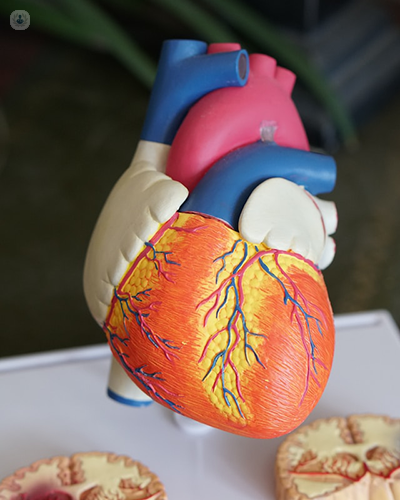Acute coronary syndromes: The latest innovations in treatment
Written in association with:Thanks to significant advances in the field of cardiology, the latest treatment modalities for acute coronary syndromes are improving outcomes for patients and reducing fatalities associated with conditions of this type. In this illuminating article, highly respected consultant cardiologist Dr Arjun Ghosh shares his expert insight on the latest developments and the most effective forms of treatment for acute coronary syndromes.

What are the most recent medical treatments for acute coronary syndromes (ACS)?
Acute coronary syndromes cover a number of conditions causing chest pain, the major one being a myocardial infarction, or heart attack. The most effective treatment for ACS is a combination of intervention (stents) and medical therapy (tablets).
In the emergency setting, the patient is stabilised with medication and then taken to the cardiac cath lab (catheter laboratory) where images are taken of the heart arteries and stents inserted if there are any blockages. This procedure is done under local anaesthetic via an artery in the wrist or leg.
There have been a number of recent advances in stent technology, coronary imaging and cardiac medications that have all helped to improve cardiac outcomes in ACS.
How has the management of acute coronary syndromes changed in recent years?
ACS management has improved significantly over recent years. Improved diagnostic ability along with improvements in stent technology and medications have decreased morbidity and mortality in these patients. Post-ACS care has also changed with an increased emphasis on lifestyle changes which has also helped decreased the risk of repeat ACS events.
What are the most common interventional options for treating acute coronary syndromes?
Patients having ACS can be treated with immediate intervention (stents) or delayed intervention (twenty-four to forty-eight hours later). The timing of intervention depends on the changes seen on the ECG (electrocardiogram), vital signs (blood pressure, heart rate etc.) and symptoms.
If a blockage in the heart arteries is seen, stents are inserted via a small tube placed under local anaesthesia in the wrist. The stent is like a small metal tube which props open the blocked heart vessel and allows blood to flow freely. Balloons are also used to inflate the stent. Small imaging cameras can also be inserted via the same tube to visualise the blocked vessel closely and to ensure that the stent is deployed well.
Are there any new or emerging interventional treatments for acute coronary syndromes?
Recent advances in interventional cardiology include newer generations of stents that are less prone to blocking off over time. These new stents also require shorter durations of blood thinning medication to be prescribed. Newer intra-coronary imaging techniques allow stent deployment to be checked thoroughly, while newer drugs decrease likelihood of ACS recurrence.
How does the choice of treatment for acute coronary syndrome vary depending on the patient's presentation and risk factors?
Depending primarily on changes seen on the ECG (electrocardiogram), patients will either be taken straight for intervention (stents) or managed with medications initially. However, if the patient’s pain is not relieved with medication or if new complications occur, such as heart rhythm abnormalities, they may then be taken urgently for intervention. Certain risk factors such as age and associated comorbidities (other diseases) may significantly increase the risks associated with an interventional (stents) approach.
If you wish to schedule a consultation with Dr Ghosh, you can do so by visiting his Top Doctors profile.


